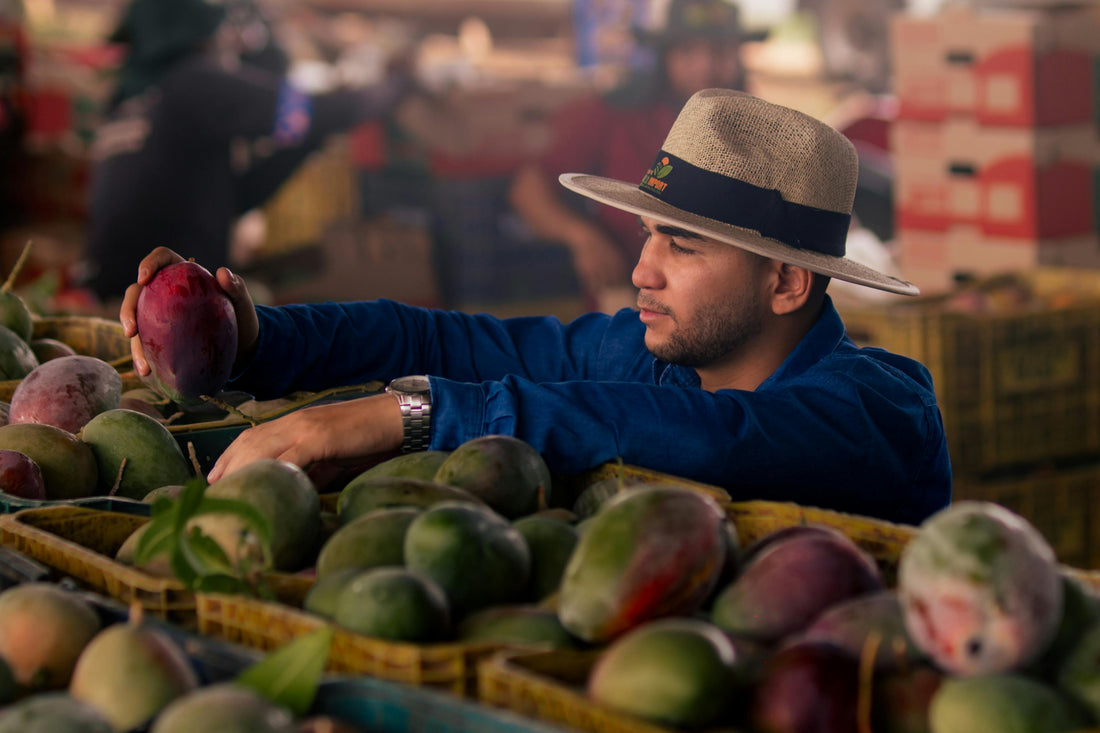
50 Essential Colombian Spanish Expressions (and How to Use Them Naturally)
Share
Introduction
Let’s be honest. You can study Spanish for years and still freeze when someone in Bogotá hits you with a “¿Quiubo, parce?”. That phrase alone says more than an entire chapter in your grammar book.
Colombian Spanish isn’t just another accent - it’s a whole vibe. It’s playful, expressive, fast-paced, and full of colorful expressions that textbooks love to ignore. If you want to actually understand real conversations and sound like you belong, you need more than just verbs and vocabulary. You need the real stuff people say every day.
This guide is packed with 50 essential Colombian expressions - not the kind you memorize for tests, but the kind you hear in the street, at parties, in songs, and on Netflix. Learn them, use them, and suddenly, you’re not just learning Spanish. You’re speaking it like someone who lives it.
Ready to decode Colombian Spanish and start talking like a local? Let’s dive in.

Why Learn Colombian Spanish?
Colombian Spanish isn’t just clear - it’s addictive. Many learners pick it up because of the accent, but they stay for the attitude. It’s crisp, rhythmic, and expressive without being overly fast or mumbled. In other words, it’s the sweet spot.
But here’s the real reason to learn it: Colombians turn language into art. They bend it, stretch it, remix it. A single phrase can carry warmth, sarcasm, warning, or affection - depending on how it’s said. That’s not something you learn in a textbook. That’s something you live.
Whether you’re traveling through Medellín, chatting online with locals, or just hooked on Colombian TV shows, mastering this regional flavor helps you do more than speak Spanish. It helps you connect.
And if you want to sound natural, relatable, and genuinely in the loop - Colombian Spanish is where you start.

Top 50 Colombian Spanish Expressions
This is the good stuff. Below you'll find 50 expressions that Colombians actually use. We’ve grouped them into categories so you can absorb them naturally. Learn them, spot them in conversations, and try them out. Just... don’t overdo it on day one.
Greetings and Everyday Talk
- ¿Quiubo? - Short for "¿Qué hubo?" It means "What's up?"
- ¿Todo bien? - “All good?” A casual way to check in.
- ¡De una! - “Right away!” or “I’m in!” Used to agree quickly.
- ¿Qué más? - Literally “What else?”, but used as “How are you?”
- Ahí vamos - “Hanging in there.” Common response to “¿Cómo estás?”
Slang and Street Talk
- Parce - Equivalent to “dude” or “bro”. Friendly and universal.
- Estar enguayabado - To be hungover. Literal: "to be guava’d".
- ¡Qué nota! - “How cool!” Used to show enthusiasm.
- Una chimba - Awesome or great. Can vary by tone, so use carefully.
- Jartera - Something boring, annoying, or a drag.
Culture and Daily Life
- Hacer vaca - To pool money together for a shared expense.
- Echar los perros - To flirt or make a move on someone.
- Irse de rumba - To go out partying.
- Sapo - A snitch or someone who tattles.
- Pilas - “Watch out!” or “Pay attention!” Literally: “batteries”.
Politeness and Everyday Courtesy
- ¿Me regalas...? - A polite way to ask for something: “Can I have...?”
- Con mucho gusto - The Colombian version of “you’re welcome.”
- Permiso - “Excuse me” when passing by someone.
- Disculpa - “Sorry” or “Excuse me” in a softer tone.
- Fresco - “No worries” or “It’s all good.” Used to calm a situation.
Colombian Humor and Sarcasm
- Estar tragado - To be totally into someone. Romantic obsession.
- Una nota - A cool person or thing. Like “he’s a good vibe.”
- Camellar - To work hard. “Estoy camellando mucho.”
- No dar papaya - Don’t make yourself an easy target. Be smart.
- Montársela - To tease or mess with someone. Friendly or not.
- Estar llevado - To be in a bad situation. Broke, sick, or overwhelmed.
- Quedarse sin el pan y sin el queso - To lose everything. A total fail.
- Estar en la olla - Literally “in the pot” - means you’re screwed.
- Tener una tusa - To be heartbroken after a breakup.
- Meter la pata - To mess up. Like saying the wrong thing at the worst time.
Food and Everyday Pleasure
- Estar amañado - To feel comfy or happy somewhere. “Me amañé en Colombia.”
- Una pola - A beer. If someone invites you for “una pola”, don’t say no.
- Guayabo - Hangover, but also used for emotional hangovers. Dual meaning.
- Cogerlo suave - Take it easy. Relax. Don’t stress it.
- Mamar gallo - To joke around, waste time, or not take things seriously.
Money and Survival
- Estar pelado - To be broke. No cash, no cards, no coins.
- Hacer una vaca - Yes, it’s repeated for a reason. You’ll hear it a lot.
- Estar corto de plata - To be low on money. Another broke expression.
- Pagar un ojo de la cara - To pay a ridiculous price. “Cost me an arm and a leg.”
- Sacar la piedra - To piss someone off. Literally: “pull out the rock.”
Travel and Movement
- Darse garra - To overdo it. To go too far. Often used for behavior.
- Darse un paseo - To take a walk, but often used as “go out for fun.”
- Estar varado - To be stranded, stuck, or without a ride.
- Llegar tarde como siempre - To arrive late… again. It’s almost cultural.
- Volarse - To sneak away or skip something, like school or work.
Final Stretch - Most Colombian of All
- Chévere - Classic word for cool, nice, or awesome.
- Vaina - A thing, stuff, problem, situation. Super flexible word.
- Gonorrea - Extremely offensive or extremely good - depends on tone. Use with caution.
- ¡Uy, qué mamera! - “Ugh, what a drag!” Expresses boredom or annoyance.
- ¡Qué boleta! - Embarrassing or shameful behavior. Cringe alert.
There you have it - 50 expressions that’ll get you closer to real Colombian Spanish than any grammar app ever could. Up next: let’s see how some of these show up in real conversations, media, and everyday life.

Real-Life Examples: Expressions in Context
These expressions aren't just vocabulary - they're living language. Here’s how some of them show up in real conversations, TV shows, music, and everyday Colombian life.
🎬 From Colombian TV
Context: In a scene from La Reina del Flow, Charly is frustrated with his team:
“¡Pilas! Esto no es un juego, necesitamos resultados ya.”
(Watch out! This isn't a game - we need results now.)
Context: A teenager comes home late in Distrito Salvaje:
“¡Uy, qué boleta llegar a esta hora! Mi mamá me va a matar.”
(So embarrassing to show up this late! My mom’s gonna kill me.)
🎵 In Music Lyrics
Song: “La Bicicleta” by Shakira & Carlos Vives
“A mi manera, descomplicado, en una bici que me lleva a todos lados”
Vives uses “descomplicado” - a super Colombian way of saying chill or easygoing.
🗣️ On the Streets
Two friends meet up:
— ¿Quiubo, parce? ¿Todo bien?
— Todo fresco, ¿vamos a hacer vaca para unas polas?
(Hey dude, all good? - All good, wanna pool some money for beers?)
In a tienda (corner store):
— ¿Me regalas una botella de agua, porfa?
(Could I get a bottle of water, please?) Note: this is polite, not literal - nobody’s giving anything away.
🎙️ Everyday Humor
Overheard on a bus:
“Ese man se fue de rumba y llegó enguayabado al trabajo. Qué nota de vida, ¿no?”
(That guy went partying and showed up hungover to work. What a life, huh?)
These phrases are everywhere - once you hear them in the wild, they stick. Keep your ears open, and soon enough, they’ll start slipping into your own speech.

Colombian Spanish in Media & Pop Culture
If you want to absorb Colombian Spanish naturally, the best way is to dive into the stuff Colombians actually watch and listen to. Here’s where expressions live and breathe — no grammar drills, just real language in action.
📺 TV Shows
- La Reina del Flow – Packed with Medellín slang. Listen for “parce”, “camellar”, and “una chimba” in almost every episode.
- Distrito Salvaje – Urban drama with Bogotá street talk. Great for catching phrases like “no dar papaya” or “estar llevado”.
- Narcos (yes, that one) – While controversial, it shows regional accents and terms like “gonorrea” used in intense situations.
🎧 Music
- Carlos Vives – His lyrics celebrate Caribbean Colombian Spanish, full of warmth and local expressions.
- Shakira (early albums) – Listen closely to interviews and older tracks for everyday Colombian phrasing.
- Feid & J Balvin – For reggaetón lovers, you’ll hear slang from Medellín used naturally in flow.
📱 Social Media & YouTube
- La Pulla (YouTube) – Political satire with fast, smart Bogotá Spanish. Great for hearing educated but still local language.
- Juanpis González – A character parody full of upper-class Bogotá slang mixed with absurd humor.
- TikTok Colombia – Search hashtags like #ColombianSpanish or #JergaColombiana and see how people actually speak in 2025.
Every expression you’ve learned so far lives in these songs, shows, and accounts. Use them not just to learn vocabulary - but to feel the rhythm, attitude, and context behind every word.
Conclusion
Colombian Spanish isn’t just a dialect - it’s a universe. The expressions you’ve seen here are part of everyday life in Bogotá, Medellín, Cali, Cartagena, and beyond. They carry flavor, emotion, humor, and identity. And now, they’re part of your toolkit too.
Language learners often stop at “neutral” Spanish, but real fluency starts when you step into the local. When you understand what someone means by “echar los perros” or “hacer vaca”, you’re not just translating — you’re connecting.
So the next time you hear a Colombian say something that sounds totally off-script, don’t panic. Chances are, you’ve already seen it here. And if not — you’re ready to figure it out.
This is just the beginning. Colombian Spanish will surprise you, challenge you, and make you laugh out loud. Keep listening. Keep learning. And keep speaking like you mean it.
